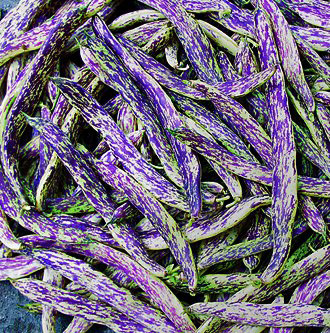Garden Tip: Free the Beans
by Eric Buteyn, Ecology Action Six-Month Intern
 During the seed propagation section of the summer intern course, John Jeavons explained how critical the timing of bean transplanting is. If a bean seedling spends too much time in the flat, the stalk length and space between the leaves and roots will of course be longer, and you will have to put the plant fairly deep in the soil to support the plant. This puts the roots into deeper, cooler soil, rather than the shallow, warm soil that bean roots prefer, resulting in lower yields. During the seed propagation section of the summer intern course, John Jeavons explained how critical the timing of bean transplanting is. If a bean seedling spends too much time in the flat, the stalk length and space between the leaves and roots will of course be longer, and you will have to put the plant fairly deep in the soil to support the plant. This puts the roots into deeper, cooler soil, rather than the shallow, warm soil that bean roots prefer, resulting in lower yields.
I looked at our data for 1991-2011 and noticed that, sure enough, the lowest-yielding bean crops over the last 20 years had spent more time in the flat. The 20 highest-yielding crops had spent as little as 5 but averaged about 10 days in the flat before being transplanted, resulting in an average of 7.8 lb of dry beans per 100 sq ft. The 20 lowest-yielding crops averaged closer to 12 days in the flat, producing on average 3.3 lb of dry beans per 100 sq ft.
There certainly are other variables to consider,
but it was noticeable that flat time did seem to influence yields. I'd like to do a side-by-side comparison with the same climatic influences to refine what I've noticed so far, but based on the above observations, it would be wise to get those young bean plants into their beds sooner rather than later.
top | Newsletter Home | Article Index

|